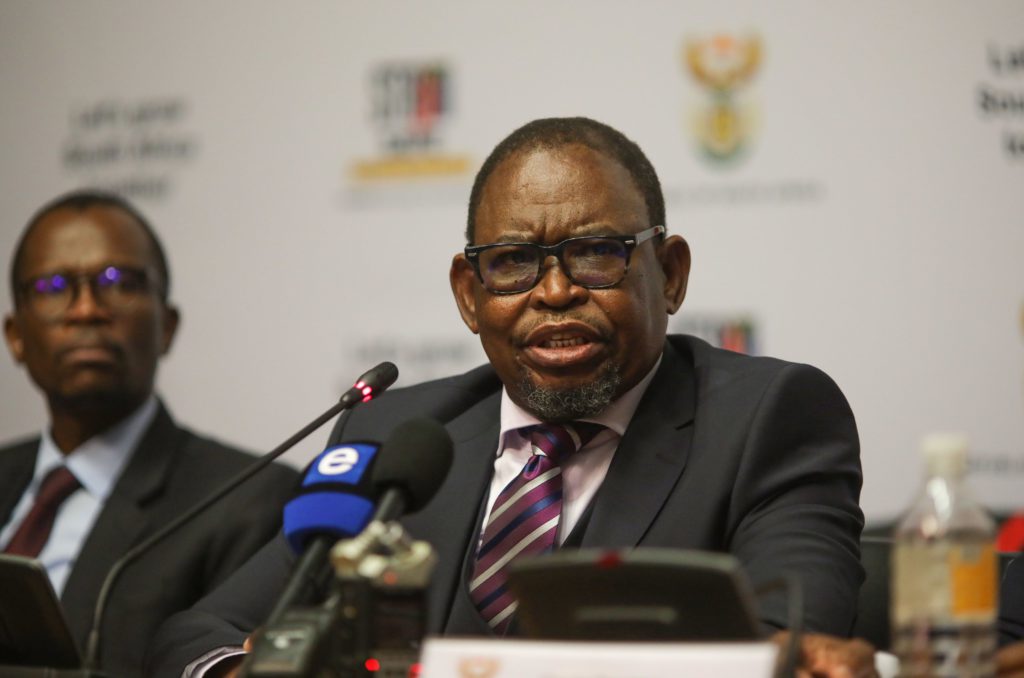Below are the highlights of South Africa’s 2022 annual budget released by Finance Minister Enoch Godongwana in Cape Town on Wednesday.
- The budget continues last year’s shift to more market-friendly policies, with windfall revenue partly from a commodities boom used to reduce taxes and the deficit
Forecasts
- The consolidated budget shortfall is forecast at 5.7% of gross domestic product for the fiscal year to end-March. That’s down from the 7.8% projected three months ago
- 182 billion rand more tax will collected than expected in the 2021 budget
- The shortfall is seen at 6% in 2022-23, narrowing to 4.2% by 2024-25
- Spending will increase to 2.157 trillion rand in 2022-23 from 2.077 trillion rand this fiscal year
- The Treasury anticipates a primary budget surplus in 2023-24, a year earlier than it projected in November
Taxes
- Many of the tax hikes of past years did nothing to boost revenue or the economy, the National Treasury says
- “Taxes inevitably distort economic activity as taxpayers change their behavior”
- Godongwana keeps to his predecessor’s plan to lower the company tax rate by a percentage point to 27%
- The effect of the drop will be offset by restricting the use of assessed losses (offsetting of the balance of losses brought forward will be limited to 80% of taxable income). Smaller companies will be exempt, though
- The employment tax incentive increases by 50% to help encourage companies to hire more young people
- Individuals get relief, through adjustments to tax brackets and thresholds
- The fuel and Road Accident Fund levies stay the same – that’s the first time since 1990 that those taxes haven’t increased
- To clamp down on unexplained wealth, all provisional taxpayers with assets of more than 50 million rand will have to declare specified assets and liabilities at market values in their 2023 returns
- First phase of the carbon tax, with its tax-free allowances and revenue-recycling measures, is extended for three years until the end of 2025. The government plans to progressively increase the carbon price each year
- A “bounce-back” project will be introduced to help small businesses, with 15 billion rand of loan guarantees offered through lenders
Debt
- The debt trajectory improves again
- Gross debt is now seen peaking at 75.1% of GDP in 2024-25, as opposed to November’s forecast of 78.1% in 2025-26
- The government borrowing requirement falls further, with the amount needed for the current fiscal year at 412 billion rand compared with 475 billion rand envisaged in November
- It’s seen at 484 billion rand in 2022-23 and staying around that level for the following two years
- Net income from Treasury bills will be zero in the year to end-March 2023
- A floating rate bond and domestic rand-denominated sukuk remain part of the funding strategy
- An RSA retail savings top-up bond will be offered in April
Welfare
- The Treasury budgets 44 billion rand for the extension of the jobless relief payment for the coming year
- The continuation of such a “social transfer” would need to be matched by permanent spending reductions and tax-revenue increases
- “In the absence of higher economic growth that supports long-term improvements in revenue collection, any proposals to fund permanent additions to public expenditure require careful scrutiny”
- Most existing welfare payments increase by 5% from April
- Nearly half of the 60 million people in the country receive at least one social grant
Growth
- Economic growth is seen averaging 1.8% over the next three years
- Growth is estimated at 4.8% in 2021 (down from the 5.1% projected in November) and 2.1% this year
- The combined impact of structural reforms, support for small business and new infrastructure investments will support growth, Treasury says
Spending
- There is more money allocated for infrastructure projects and 18.4 billion rand is earmarked to boost youth employment and to create short-term jobs over the next two years
- 8.7 billion rand is added to the police budget, partly to hire more officers
Eskom
- There was no announcement on Eskom’s debt restructuring plans
- Eskom didn’t meet the Dec. 31 deadline to complete the legal separation of the transmission unit, in part because lenders haven’t yet approved the proposed restructuring
- The utility was given special dispensation to access additional guaranteed debt of 42 billion rand in 2021-22 and 25 billion rand in 2022-23
- “The National Treasury is working on a sustainable solution to deal with Eskom’s debt in a manner that is equitable and fair to all stakeholders,” Godongwana says in his speech











